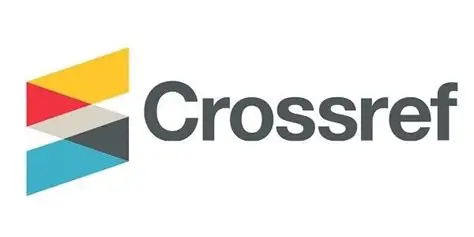DOG BREED IDENTIFICATION USING DEEP LEARNING
Keywords:
Dog Breed Identification Using Deep Learning,,Abstract
It is now crucial to determine the breed of dog To be able to comprehend the environment or
climate that dogs may live in. Techniques for Dog Breed Identification have been used to
categorise dog breeds according to their physical attributes, for size, shape, and colour. The
canine breed has been determined by analysing a dataset including 120 distinct breeds. Transfer
learning, or CNNs, or convolutional neural networks, are the first step in this process.
Assessment metrics and accuracy are accustomed to assess this approach.
This work talks about a fine-grained picture Convolutional neural networks, among other novel
deep learning methods, are employed in the system being shown. Utilising the Stanford Dogs
dataset, one may train and test two different networks. A program demonstrates how to utilise
and rate convolutional neural systems. It has both an both in-person and virtual version, with a
mobile device and a central server app that includes parts and tools for testing on a neural
network.
The goal of this project is to create a model for deep learning that can tell the difference between
pictures of cats. The suggested system utilises Convolutional neural networks (CNNs) are used
to extract significant information from the input pictures then divide them into categories
according to the types of dogs they represent. Several hundred pictures of different dog breeds
were employed in this project. Utilising transfer learning, train the model. An already trained
CNN was utilised as a starting point and was tweaked for reproductive information. They also
show that it could be applied in actual life for things like animal identification, breeding, and
study pedigrees.
References
REFERENCES
G. E., I. Sutskever, and A. Krizhevsky Hinton. "ImageNet Categorisation Using Deep
Convolutional Neural Networks ," Neural Information Processing Advances Systems 25.
Curran Associates, Inc. (2012), pp. 1097–1105.
Ren, S., He, K., and R. B. J. Sun, Girshick, and "Faster R-CNN: Towards Region Proposal
Based Real-Time Object Recognition Networks," CoRR, vol.abs/1506.01497, 2015.
O. Abdel-Hamid, A. R. Mohamed, H. Jiang, L. Deng, G. Penn, and D. Yu, "Convolutional
neural networks for speech recognition," IEEE/ACM Transactions on Audio, voice, and
Language Processing, vol. 22, no. 10, pp. 1533-1545, October 2014.
Goodfellow, J. Pouget-Abadie, M. Mirza, B. Xu, D. Warde-Farley, S. Ozair, A. Courville,
and Y. Bengio, "Generative adversarial nets," Neural Information Processing Advances
Systems, 2014, pp. 2672–2680.
Lindeberg, T. "Scale Invariant Feature Transform," Scholarpedia, vol. 7, no. 5, p. 10491,
Revision #153939.
Dalal and Triggs, "Histograms of Orientated Gradients for Human Detection"Pattern
Recognition and Computer Vision, 2005. CVPR 2005. IEEE Computer Society Conference,
vol. 1, IEEE, 2005, pp. 886–893.
A. Khosla, B. Yao, L. Jayadevaprakash, and N. Fei-Fei, "Novel fine-grained image dataset
categorisation," Initial Workshop on Detailed Visual Categorisation, June 2011, Colorado
Springs, CO: IEEE Conference on Computer Vision and Pattern Recognition.
R. J. Schalkoff, Artificial Neural Network. McGraw-Hill New York, 1997, Volume 1.
I. Sutskever, A. Krizhevsky, and G. E. Hinton. "Imagenet classifying with deep
convolutional neural networks."
A. Karpathy, G. Toderici, S. Shetty, T. Leung, R. Sukthankar, and L. Fei-Fei. "Large-scale
Classifying videos using convolutional neural networks." IEEE Conference on Computer
Vision and Pattern Recognition Proceedings Recognition, 2014, pp. 1725-1732.
C. Szegedy, S. Ioffe, and V. Vanhoucke, "Inception-v4, inceptionresnet, and the impact
of residual connections on learning," CoRR, vol.abs/1602.07261, 2016.


